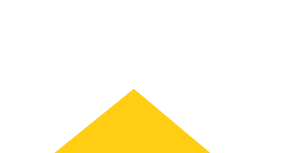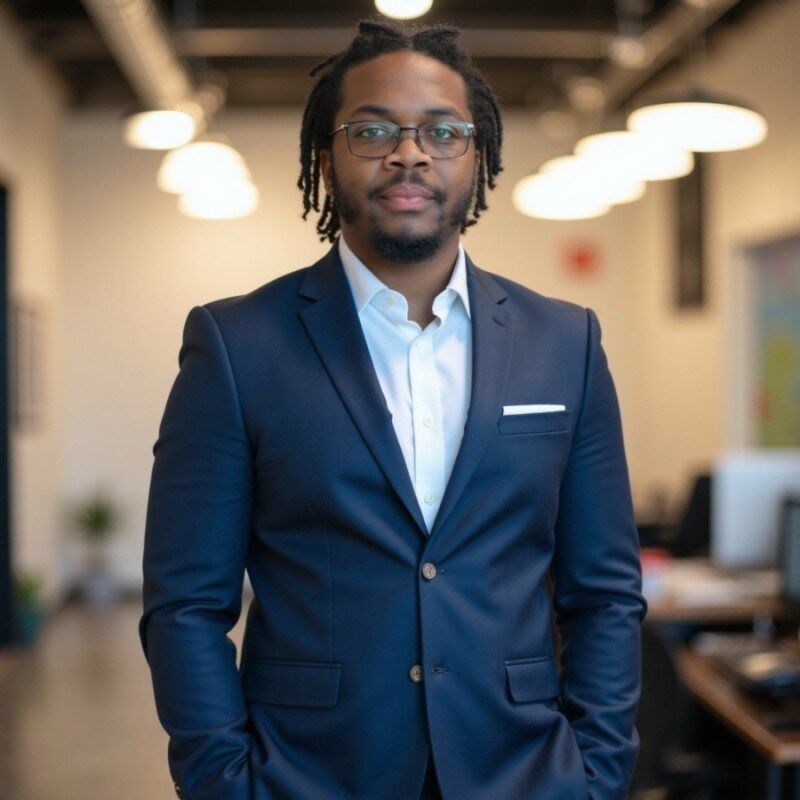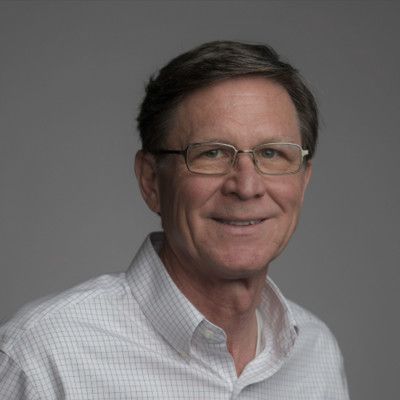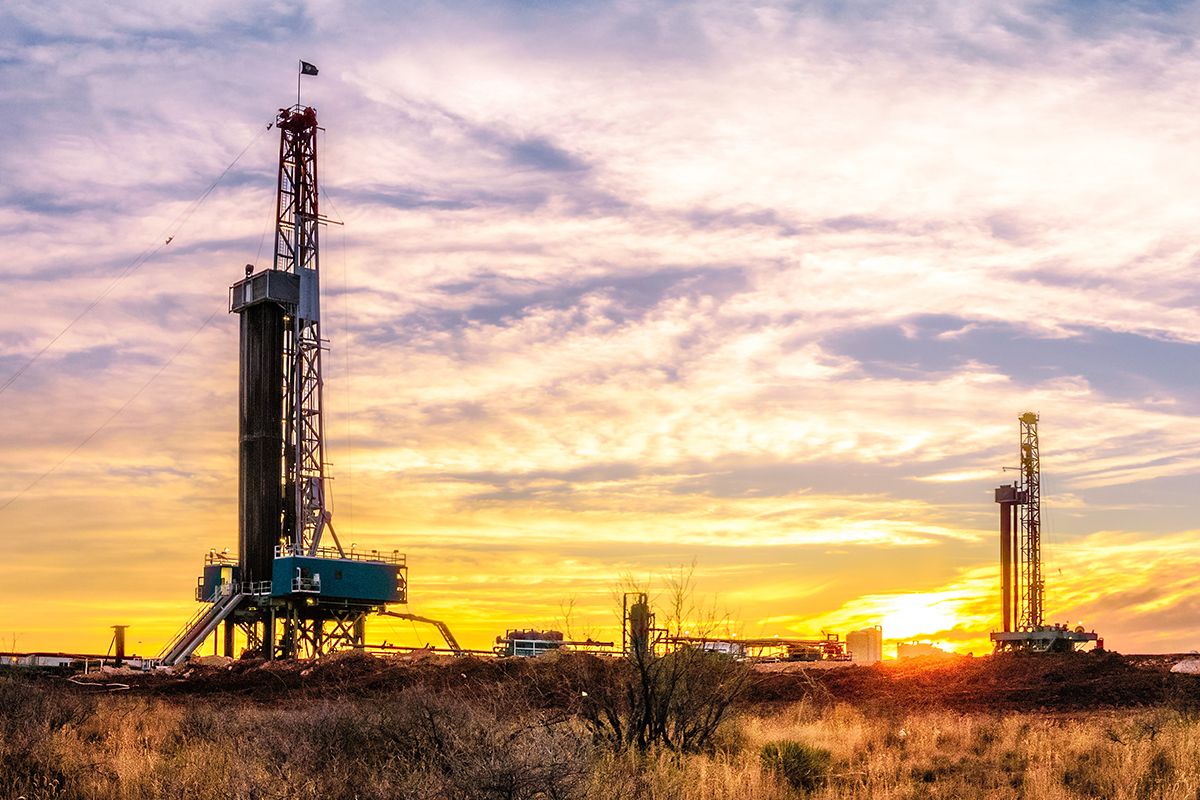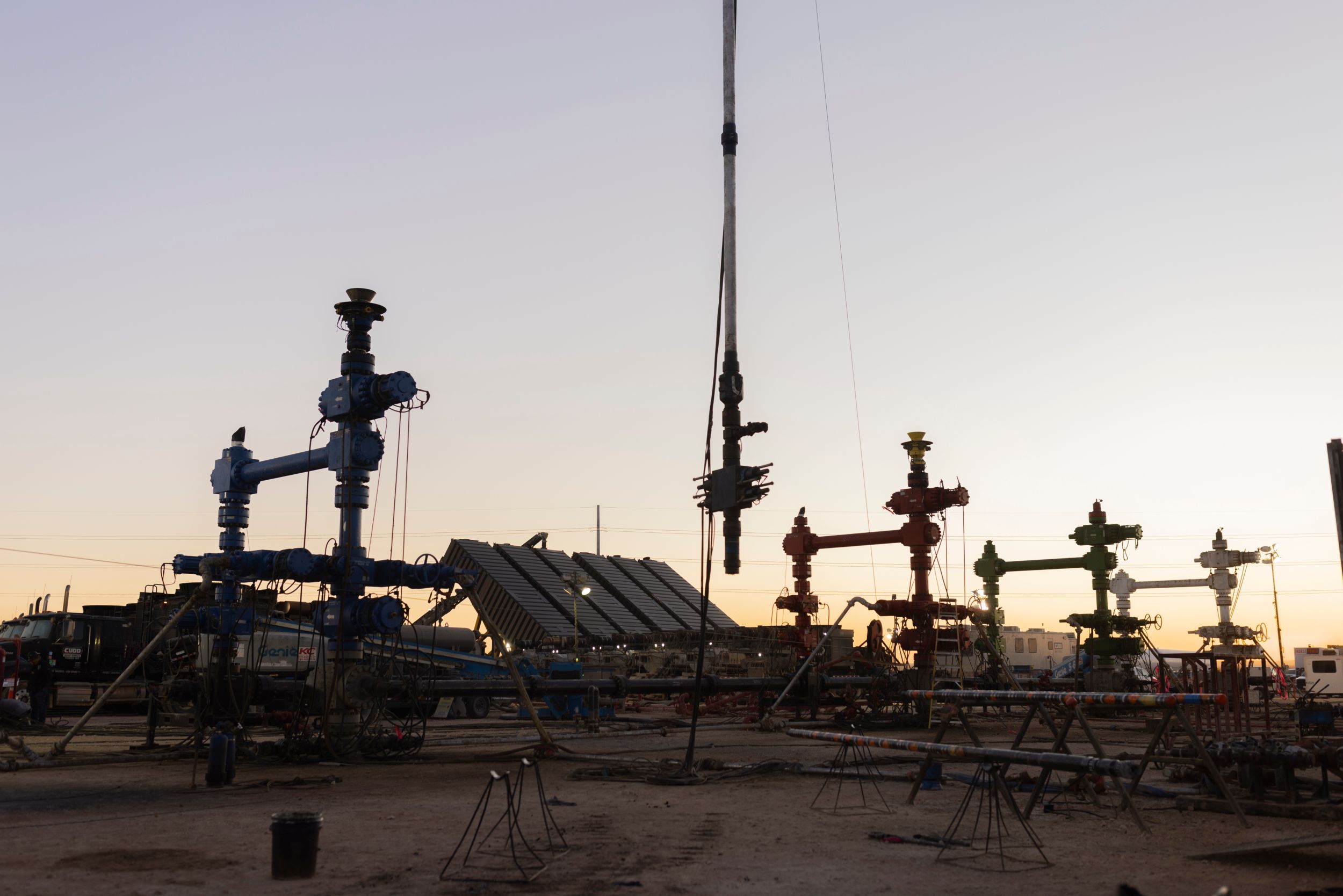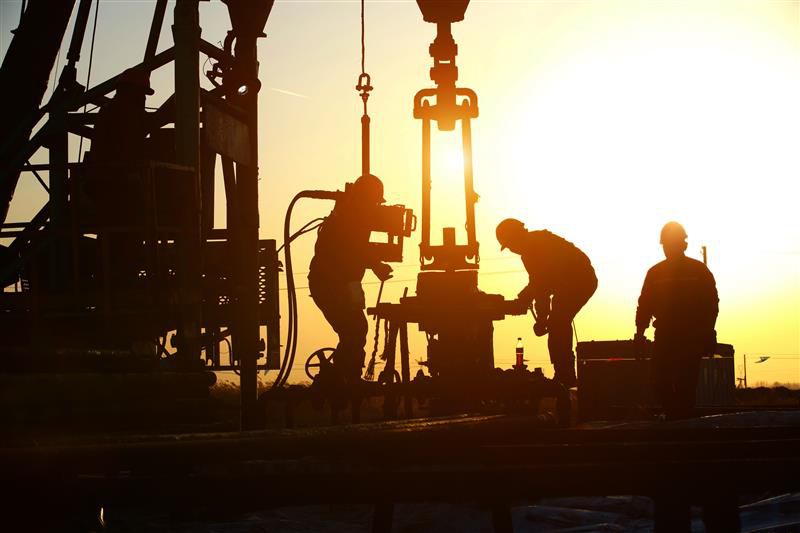00:00:03 A
This episode of the Energy Pipeline is sponsored by Caterpillar Oil and gas. Since the 1930s, Caterpillar has manufactured engines for drilling, production, well service, and gas compression. With more than 2100 dealer locations worldwide, Caterpillar offers customers a dedicated support team to assist with their premiere power solutions.
00:00:29 B
Welcome to the Energy Pipeline podcast with your host, Russell Stewart. Tune in each week to learn more about industry issues, tools and resources to streamline and modernize the future of the industry. Whether you work in oil and gas or bring a unique perspective, this podcast is your knowledge transfer hub. Welcome to the Energy Pipeline.
00:00:53 Russell Stewart
Hey, everybody. Thanks for listening. As always today I'm excited to welcome to the show Jimmy Miller. Jimmy is. Let's see, Jimmy, if I can get this right. Process safety leader for Yoko Gawa Corporation. Is that right?
00:01:12 Jimmy Miller
That's correct.
00:01:13 Russell Stewart
All right, I got it right there. Okay. I'm supposed to write that down in my notes and somehow or another I missed that. So, Jimmy, thanks for coming on the show.
00:01:24 Jimmy Miller
Hey, good to be here. So happy to talk about this topic. It's something that's near and dear to me, and the timing is very, very good for this.
00:01:31 Russell Stewart
Well, so tell me a little bit about yourself. Who are you? Where are you? What are you?
00:01:40 Jimmy Miller
What am I? That's kind of a hard one to say. My name is Jimmy Miller. I look after the process safety business for Yokogawa in North America. So we have a. A safety instrument assistant product that I'm responsible for, but I'm also responsible for go to market strategy, everything around subject matter, expertise around process safety. And just in the last two years or so, I've tied on an occupational safety piece of what I do every day. So. So I'm kind of the de facto safety guy for Yokogawa here in the US For Yokogawa.
00:02:13 Russell Stewart
And where are you located, Jimmy?
00:02:16 Jimmy Miller
Yeah, I work out of our Sugar Land, Texas office, but I'm actually physically located in a really, really old house in Natchez, Mississippi, about five and a half hours east of Houston.
00:02:26 Russell Stewart
Oh, wow. Natchez, Mississippi. A lot of old history around there. And you got the. You got the Natchez Trail there. It's a beautiful. It's a beautiful part of the country. A beautiful part of Mississippi. Is that where you're from?
00:02:42 Jimmy Miller
I'm not. I'm actually from just outside of Baton Rouge, but I've spent a majority of my professional career just outside of Austin, Texas. And we moved back here and bought this old. This old 1908 house about two years ago. And when I'm not doing this I'm working on this house.
00:02:56 Russell Stewart
You're working on a 1908 house, huh?
00:02:59 Jimmy Miller
A lot of fun.
00:03:00 Russell Stewart
Well, well, be safe. Hey, listen, I want to introduce the audience. We're probably going to run this on the HSE podcast, but I wanted probably also run it on oggn's the Energy Pipeline Podcast. And this gives me the opportunity to do some shameless advertising for OGGN and also the Energy Pipeline podcast, which is sponsored by Caterpillar Oil and Gas. And we really appreciate Caterpillar's commitment to the oil and gas industry. And so we call it the Energy Pipeline Podcast. It's not a pipeline podcast. It's kind of a play on words. It's the pipeline of all things oil and gas. And I've got to do something that I should have done, made a rookie podcast mistake and didn't close out everything that I'm supposed to close out. And we got noise coming in on the podcast, which we need to get rid of. If I can figure out the right buttons to push here. There we go. Okay, so anyway, it's all things oil and gas. And then as I said, for those of you who are familiar with OGGN or you're not familiar with Oggn, please go to www.oggn.com and look at our entire list of oil and gas podcasts. We've got about 20 of them now. And of course, HSE is the one I host and it's one of the, if I do say so myself, one of the more popular ones. And we appreciate that. It's not because of the quality of the host, it's because of the quality of the guests and also the quality of the listeners. But the Energy Pipeline is real popular and because it's kind of a general oil and gas podcast, I wanted to take this opportunity to introduce the audience to Yokogawa Corporation. Tell me about them.
00:05:11 Jimmy Miller
Yeah. Is a Japanese based automation control measurement company. So we've been in business for many, many years. We primarily handle measurement, pressure, temperature, flow and analytics for industrial processes primarily. Also we have automation and control and process safety system. So we have a distributed control system as well as the safety instrument system. And really in recent years especially we've had a heavy focus on digital transformation and level three and level four software applications that help people achieve operational excellence and all the things you expect with digital transformation and artificial intelligence.
00:05:53 Russell Stewart
Okay, well, great. Well, I'm glad we got that in. And so I guess you're across all industries, but you have a heavy emphasis in oil and gas.
00:06:01 Jimmy Miller
That's correct. I Have emphasis on the process industry in general, oil and gas, chemical. Yes, sir.
00:06:06 Russell Stewart
Okay, great. Well then I'm glad to introduce Yokogawa to the audience. Jimmy, you're going to be speaking at the Mary Kay o' Connor Process Safety and Risk Conference at Texas A and M University at their main campus there in College Station later this year, is that right?
00:06:30 Jimmy Miller
I am. Unfortunately for you, Aggie fans gig them. We're moving from the Texas AM campus and the Houston proper. So we're going to be in the energy corridor this year. Really we kind of outgrew College Station as far as the number of attendees we have. We're also trying to get a little closer to the customer base down on the ship channel and hopefully get more end user customers. But this is really a great conference that I've been involved in personally for many, many years. I'll be presenting there this year on exactly this topic on the convergence of occupational safety and process safety. So the title of my talk there on the second day is Slip Strips and Loss of Containment. So it should be an interesting time. I think most of the time our track is primarily automation instrumentation people with a heavy, heavy safety focus. So it'll be a pretty unique step in this year, I believe. But looking forward to having that discussion with the folks.
00:07:25 Russell Stewart
So are you an Aggie?
00:07:27 Jimmy Miller
I am not, but I'm close enough to it because my, my middle son is a senior. He graduates in December from Texas am. He's just getting back from a study abroad in Japan as a matter of fact this week and graduating.
00:07:40 Russell Stewart
And that's where Yokogawa is. It's in Japan, right?
00:07:45 Jimmy Miller
Yeah, it is. I found him just to stay there and come on board with us. But he wanted to graduate.
00:07:49 Russell Stewart
He wanted to graduate first. Okay, well, just, just for the heck of it, my son graduated from Texas A and M, so I, you know, that gives me the right to tell Aggie jokes is what I say.
00:08:03 Jimmy Miller
So there's always a good excuse. You don't need an excuse for an Aggie joke.
00:08:07 Russell Stewart
Well, actually there are only two Aggie jokes. All the rest of this stuff's true. So. All right, so let's talk about, let's talk about process safety. That, that term gets thrown out there a lot. In fact, I had a process safety gown expert on. Actually I've had two or three of them on here recently. But I think people get confused about process safety versus what do you call the other kind of safety? Occupational safety. That's your, that's your two safeties, Process safety and occupational safety. So, so what's, what's the difference between those two or the definitions and scope of it?
00:08:54 Jimmy Miller
I think for process safety, again, I hope the, the EHS people listen to the podcast, don't hit end and go on to something else, because I'm a dumb process safety guy. But, you know, the process safety people are working. We're, we're, we're more concerned about loss of containment incidents. So if you go into a plant, there's lots of pipes and vessels and valves. Bad things happen when, when the things come out. So our primary goal is to prevent a loss of containment incidents. So that has to do with, with reliability of everything from the, from the piping down to the instrumentation and the safety system that sits on top and overseas and make sure that everything is in good shape. So, you know, I'm a credentialed process safety expert. I'm a certified functional safety expert and a TUV functional safety engineer, which means I can go in and have conversations with customers without having to spend a lot of time building credibility for myself personally, which is great because, you know, then we can jump right into it. The occupational side. I'm a little newer to it, right. I've only been back in this business for probably two years. So I'm at the point now where I have to, you know, prove my worth when I'm talking about occupational safety, which is more around, around worker safety, slips, trips and falls, falling from height, excavation safety, permits to work, control of work solutions. All of those types of things are what occupational safety is about. So if I talk to a person on the street and say I'm a safety guy, they all assume I'm worried about ladder safety and hand tool safety and gloves and silto shoes, but completely separate. Right? Process safety is different. And I tell you, up until the last couple of years, it seemed like they didn't. We didn't want to look at each other if we were in the same plant, in the same building, in the same office. The occupational safety, which we call EHS or ehs Q now for quality. There was never really any connection between the process safety folks in the EHS or occupational safety people. And that's really changed I've seen here in the last five years or so. And I think that's going to continue to be a focus going forward.
00:10:55 Russell Stewart
Well, I was going to say that's a mistake to not integrate those two together, isn't it?
00:11:01 Jimmy Miller
I believe so. I think when you silo anything related to safety, then you, then you miss things that you shouldn't be Missing. I mean, if I'm. If I'm at a plan and I'm worried primarily with slips, trips and falls and ladder safety, but I neglect my reliability in my, in my process safety program, then that's a bad thing. But if I spent all my focus on process safety and ignore worker safety, then that's a bad thing. You have to have a good balance. And I think that in 2025, the one good thing that came out of COVID with the fact that people were more willing to digitize and digitalize and digitally transform their organization. So there was always information out there, but now there's, there's mechanisms and software tools that kind of bring all the data together into a unified dashboard. So the silos, I think, are going away. And a lot of that has to do with that digital transformation movement that we've seen over the last five to eight years. Okay.
00:11:54 Russell Stewart
And that's what Yokogawa was all about, is this digitalization automation, is that right?
00:12:00 Jimmy Miller
We do. We spend a lot of time around that, helping our customers look at their existing operations and where we can help them with achieving excellence around operations or maintenance or worker safety, whatever it is. We have a handful of consultants, they're called theory consultants. So you can look up Siri assessment. And what these guys do is they go out and analyze a company's process, whether it's manufacturing or production, and help streamline that process. And most of the time it comes with digital tools and changes in procedures.
00:12:37 Russell Stewart
Okay, so talk about the digital tools.
00:12:41 Jimmy Miller
Well, I think at the end of the day, if you look at where we are in 2025, every device out there has some smarts associated with it. And I think that those were siloed smart devices for many, many years. And it was just data. And I think here in the last several years, the challenge was to take that data and make it useful. Right. So you want to take all that points and information, whether it's risk assessment data, or whether it's plant process data with pressure, temperatures and flows, or whether it's operational data, safety data, and actually turn it into something, whether it's going to be a chart or a graph or populated KPI for an organization to see how safe they're running today or how efficient they're running today, that's the goal, is to take that data that's in big buckets everywhere and put it together and turn it into something useful. And then the next step from that is to turn that useful data into knowledge. So not just the fact that you have pretty pictures that Come up automatically now, but now it becomes a knowledge base for you. My wife works in healthcare and she talks about all the time charting her customer's progress or her patient's progress when she goes around. She's a respiratory therapist, so she does all the charting. And a lot of the places she's worked, those are manual processes. They're written down on paper. And they're there really for the biggest reason is for liability purposes. In the event that a patient has an issue, it's their proof that they did the right thing. And in the plants, it's the same way we do a lot of things in the plants, where we record things on paper, or then we get really high tech and start using Microsoft Excel. And then there were other software tools, but recording the data for the sake of reporting, it's kind of useless. But if you can turn that into analytics, like the healthcare example, if they had more digitized health records back in 2020, 2019, they could have maybe caught trends and maybe even identified this whole Covid thing well before it happened, because you can look at all the trends and, you know, a health decline and see it happened and kind of do some predictive analytics for healthcare. And the same thing in the plants, right? You have operators who come in, they do operator rounds and they record those, they do shift handovers and they record those. But there's no real unified tool to tie all that stuff together and turn it into knowledge. And that's really the core of what Yokogawa sees, and I think the industry sees, is that all the data is there, the information is there to turn into something useful and to provide more of an autonomous operation versus always a manual operation, not autonomous, like all the workers go away. Let's put robots in their place doing the things. But the fact that you can control your process, you can provide analytics for what's going on in the plants automatically without having to go out there and ask it to do it. That it's just there. That's. That's the goal of this digital transformation. And. And now at 2025, everyone's talking about AI. I had a discussion with a coworker probably 10 years ago, and we were having a couple of adult beverages, and he goes, what do you think about AI? I went, I don't know. I think it's kind of cool. I'm a process safety guy, so we're kind of conservative in general for technology, so I don't. I think it's kind of cool. He goes, no, AI for safety now. There is no way I'm ever, ever, ever, never going to talk about AI and process safety in the same sentence. Well, at the Texas A and M conference we talked about, I submitted an abstract flag. Weird. That's exactly what I did. And when I submitted the abstract, the people on the STEREOT committee laughed and laughed at me. They were like, we're never going to adopt AI and process safety. This was four years ago. So I'm on the steering committee this year and we have two full day tracks of AI and process safety. It's something I never, ever thought that our industry would see because we're pretty slow movers when it comes to things like that. But I think no matter how slow you want to be, the industry's going faster than you want and you have to jump on the train and embrace the technologies and the trends, otherwise you're going to be left behind.
00:16:40 Russell Stewart
Okay, so can you give me some case specifics? I mean, how does this thing work?
00:16:48 Jimmy Miller
Well, I think, you know, going back to the early on, maybe not the AIP shed, but the early on, the digital transformation piece, where I really, where I really saw the convergence for me, where I was looking at occupational and process safety together. Like I said, about two years ago, I was given responsibility for a solution we have that handles control of work. So the OSHA act in 1970, the General Duty clause said, you're going to employ people in your facilities. You have to keep them safe, keep them safe from harm, provide them training, provide them PPE and those kinds of things, so do no harm to your employees. And that was a great thing. It was a good step forward for workers. But on the process safety side, we didn't really have that, not until 1992. So you had to, you know, fast forward 22 years before the OSHA process safety management regulation came out. So at that point, you know, there was a regulation to keep people safe. In 92, there was a regulation to keep the industry safe from, from process incidents that included loss of containment. So now we have these two regulations in the government, you know, watching over those things and hopefully making things safer. But this whole digital transformation thing kind of started pulling them together. And when I got my hands on this controller work piece where I'm, I'm handling risk assessments for, for, for workers, electronic permitting for permits to work, as well as isolation management for lockout, tag out and those kinds of things, then I realized very quickly that there's a whole lot of overlap. And I think the biggest overlap I see between process and occupational safety is the fact that foundationally there's going to be a risk assessment that has to be done. A risk assessment for the process and the process safety side. We have a thing called a process hazard analysis where we go out and determine how much risk is associated with, with making ethylene or gasoline or whatever type of chemical that there is out there in the process area. But on the occupational side, you also have to do a risk assessment for the people going to do work. Whether you're working at heights or you do an excavation, you have to risk assess and determine what's the likelihood of this person getting injured doing this job and what type of PPE and safeguards can we provide to assure that that injury doesn't happen. So then I started seeing that, okay, foundationally there's a risk assessment for both. If we had a tool to handle risk assessments for both of those together, that would make all the sense in the world. And that's what I'm seeing. I'm seeing that that risk assessment piece is pulling those two activities together to some degree. And the fact that there's digitalization and data on both sides that are used for occupational and process safety, that's where I think the acceleration of that kind.
00:19:32 Russell Stewart
Of happening, that's where the AI is coming in.
00:19:35 Jimmy Miller
Yeah, the AI, I tell you what it is, it's making things a little bit easier. And I think that if I'm not an AI expert by any means, we have some people in our organization that live, sleep and breathe it. But what I've seen, it just makes short work of manual processes that people had to do for years, aggregating large, vast amounts of data into something useful. The challenge I've seen with AI in general and the process industry and probably everything else is that to be trained with good data and then you have to have a human go validate that data. That is correct. Because I've used several different. I've used several different AIs. And it's funny, I've asked 15 questions the same way and gotten five answers. I've asked other ones the same question that gave me five of the exact, the exact same answers, but they were all very, very wrong. But instead it was all of the stress. This is correct, but it wasn't then I've seen some others that were very, very good. And it has to do with how well, how well those, those AIs are trained by the organization that are using.
00:20:37 Russell Stewart
So that's the key. Right, so we're still back to the old garbage in, garbage out.
00:20:42 Jimmy Miller
Absolutely. And the difficult thing about the garbage in, garbage out part is you, let's say for instance, you have chat GPT, which is really awesome if any organization wanted to use that or a piece of that. And then they have to train from their own stuff, but you don't want your own stuff to get out, so you have to train it. But you also have cyber security and whole AI organizations now that are there just to protect a company's data. Like Yokogawa uses some of it, but we don't share it with the broader community. So it's ours, our tool that we create. And I think that everything from healthcare, automotive, industry, everyone is having that challenge. And we have an organization now that's dedicated to AI when it comes to the legalities of it. What can we and can't we do as an organization? What are we allowed to, what are we not allowed to? What should we stay away from, what we're not allowed to even talk about? So it's a new challenge for companies that maybe never even thought about this kind of technology five years ago, and now they're having to build organizations to manage it.
00:21:45 Russell Stewart
Okay, and so you can help them do that. Is that, is that what Yokogawa does?
00:21:50 Jimmy Miller
Absolutely. So, yeah, we'd be more than happy. We, we do enjoy that, I think. I have a couple guys on my team and that's, that's really what their primary focus is. Again, I'm a process occupational guy, occupational safety guy. We also have a cyber security guy on our team who, he's real focused on cyber security. So it's kind of nice to have him there to gut check me on some things when it comes to connectivity and, and all this digital transformation, because 10 years ago, people were scared to death to connect anything to the network from a process safety or even an automation perspective. I'm not sure if you remember back in 2010 when Stuxnet hit the industry.
00:22:28 Russell Stewart
When what hit the industry?
00:22:30 Jimmy Miller
Stuxnet.
00:22:31 Russell Stewart
No.
00:22:34 Jimmy Miller
It was a malware. It was basically a virus that, that hit the Iran nuclear facility in 2010. So that was the first time that the industry saw a cybersecurity attack on an industrial process system. And then that, you know, that, that built. Made all these organizations build cybersecurity expertise with internally because, you know, all of us that do process control and process safety and just control in general, that was kind of, that's going to happen in the IT world, but never going to happen in the operational technology world over in the automation space. But now again, the industry latched on to cyber security and then digital Transformation was kind of the next big thing that the industry kind of latched onto. And now in 2025, it's all about AI. I went to a occupational safety conference in Orlando about a month ago. The American Society of Safety Professionals, again, process safety guy, with a bunch of occupational guys. There were lots of stiltos, shoe manufacturers, a lot of glove manufacturers, hard hats, and very little of what I do. But again, I'm trying to, I'm trying to build expertise on both domains and get myself back into that world. But again, lots of AI discussions at that conference, which was really, really surprising. And yeah, it's just industry is an interesting thing. And I think that, you know, in 2025, again, I think AI is going to be the thing for some time until the next shiny thing comes along.
00:24:03 Russell Stewart
Well, I appreciate you mentioning that Iranian cyber security attack. You've been around for a while. You got any other case examples where misalignment led to incidents or.
00:24:21 Jimmy Miller
I think a lot of them. I think if you look at everything from, you know, I hate to throw any incident names or customer names when I'm talking about, well, you can just.
00:24:29 Russell Stewart
Say a, a major, whatever. You know, we do that all the time.
00:24:35 Jimmy Miller
I think the biggest one that, that always resonates with me is, you know, a large offshore oil producer had an explosion in the Gulf of Mexico and lost containment incident for, for a long time. Right before that explosion happened. They just celebrated a lot of hours of no lost time incident. So their occupational safety record was stellar, but they ignored the process safety piece that was really, really important that led to that, to that problem. So, and that happens a lot. It's either one way or the other. It seems like the companies will focus too much on the, on the worker safety and ignore the reliability and the process safety piece, or they work really, really hard in the process safety piece and they'll, they'll not inform the workers of, if they're on an emergency response team about the process danger when they're going into that tank farm to put out a fire. It's not just a fire, it's a fire that could turn into something much more catastrophic. So that has to do with everything from worker training, you know, competency, management of your contractors and your internal people. You know, on the process safety side, the OSHA PSM says you have to be competent to do whatever work you're doing on a process safety system. That's all it says. It's confident. It doesn't say you have to be certified, doesn't say you need a degree. It says you need to be competent in whatever task you're performing. On the other side, on the occupational side, you need confident people doing the work in plants. But I think that that competency management and contractor management sometime isn't as rigorous as it could be. Right out of high school, I was going to go in the military. So I'm a veteran. I'm an Air Force veteran there during the first Gulf War.
00:26:16 Russell Stewart
Well, thank you for your service.
00:26:18 Jimmy Miller
Yeah, appreciate you very much. We got to tell the, the Scud, the Patriot missile guys where the Scuds were in real time from a different hemisphere. So I was in Space Command, which is now Space Force. And it was really, really a great job and I enjoyed. I can't. The fact that I was a mama's boy is the only reason I had to stay in longer than four years. But I came back and went to school. But before I went off in the military, I worked about four months as an electrical instrumentation contractor at a big major chemical plant down in Louisiana. And the first day on the job, I called the supervisor, called me the day before and said, wear blue jeans or work pants and steel toe shoes and we'll take care of the rest. Okay. So I get there and I went through my half a day of training. This is what a hard hat is. This is what the plant emergency response sounds like. This is how you lift safely. Here's MSDS for the chemicals in this plant. And then after lunch, I went out and went to work. And I was. I was pulling cable and I was. We were pulling 13,800 volt cable, 13, 8 cable. And I was the ground guy, which meant I was. I'm pulling this cable out, this, you know, two or three inches in diameter off this big reel by myself because I'm a new guy. And I'm grabbing and I'm feeding it up over my head all afternoon long to a guy in a bucket truck and some other people pulling escape win. So I was a ground guy pulling it out and I didn't know anything about anything. I'm out there with no gloves because they didn't tell me any gloves. Oh boy, 1989, they didn't provide gloves. So, yeah, you know, one o', clock, man, my hands hurt and about two o' clock my hands were blistered. And about three o', clock, the blisters busted. My hands were bleeding. And it's going. This is in 1989. It's not even like it was in the 70s or something. And everybody on the job site is laughing about the new guy with his bloody hands. And I was at a bauxite plant, so everything's got red dust in it. I don't know if I'm going to die. But again, the training I was given was very, very, very substandard. I wasn't given a lot of training as I continued being electrical contractor all the way through college. And then a little while after I graduated, I realized that the training that people were given was as good as the person they were put to work with. So the training programs weren't that great. But what I have seen in the last 10 years since I've been talking to people, training programs have gotten a lot better and have done a lot better job training workers to do the tasks that they're going to be required to do. Safety's always been important, but I think that OSHA wants proof of everything. Now, I say OSHA is like the. They like Missouri. They're the show me state. So if you're doing the things you're supposed to do, they want you to be able to pull out the paper and show me that you did what you said you were going to do and show me that you followed our rules and you documented, did all the things that. That we required of you to keep people safe. So I, you know, I think people hate regulation and they hate the government looking over a shoulder and saying, you got to do these things and document them. But at the end of the day, it's trying to keep our industry safer. Whether you keep it a forklift driver safe or you keep an operator in a plant safe, that's what our industry is trying to do. The more incidents that happens in our industry, you know, the worse people look upon us. And I think that it's our job, you know, from the electrical contractor running conduit to the process engineer designing the system, we all need to think about that and try to keep our. Our keep our industry out of the news, except for in a good way.
00:29:45 Russell Stewart
There you go. There you go.
00:29:46 Jimmy Miller
Yeah, absolutely. I think the safety. Yeah, I think safety people and cyber security people are so willing to share best practices and what they do that work. On the automation side, not so much, because there's a lot of proprietary stuff when it comes to actually automating a process to make a product. But when it comes to cybersecurity and safety, I think the industry is so happy to share things that work for them that other people can pick up as best practices. And that's one thing that I really, really like about safety. Whether it's process, occupational, environmental, whatever it is, as the industry collectively, we think alike, right? We want to keep our industry safe, keep our people safe, keep ourselves out of the news the bad way and make sure we're doing the right things.
00:30:28 Russell Stewart
I couldn't have said it any better myself. That's a great way to end the show, Jimmy. And of course that's what this podcast is all about, is sharing those things with everybody and ensuring that everyone does come home safe. Jimmy, if you don't mind, we're going to put your LinkedIn contact info in the show notes. So anybody who would like to visit with you and share some of their insights or get some more of your insights can reach out to you. I really appreciate you taking the time. People won't know it, but we had to reschedule this podcast recording time because as you told me in the email, you had some kind of fire drill. You had to deal with this this morning with, with a customer.
00:31:20 Jimmy Miller
Wasn't this old house? It was actually a customer issue. We got it taken care of and we're good to go. And thanks for your flexibility. I appreciate it, Russell.
00:31:27 Russell Stewart
Absolutely. Well, again, Jimmy, thanks for coming on and we'll do it again sometime because I think we just scratched the surface. There's several other questions I thought of that I'd like to ask you, but we're, we're at the end of our time right now and so to everybody out there listening, as always, we appreciate it. Please tell your friends to listen to us, post us on LinkedIn, leave us reviews, and we'll see you next time.
00:31:54 E
Thanks for listening to oggn, the world's largest and most listened to podcast network for the oil and energy industry. If you like this show, leave us a review and then go to oggn.com to learn about all our other shows. Don't forget to sign up for our weekly newsletter. This show has been a production of the Oil and Gas Global Network.
